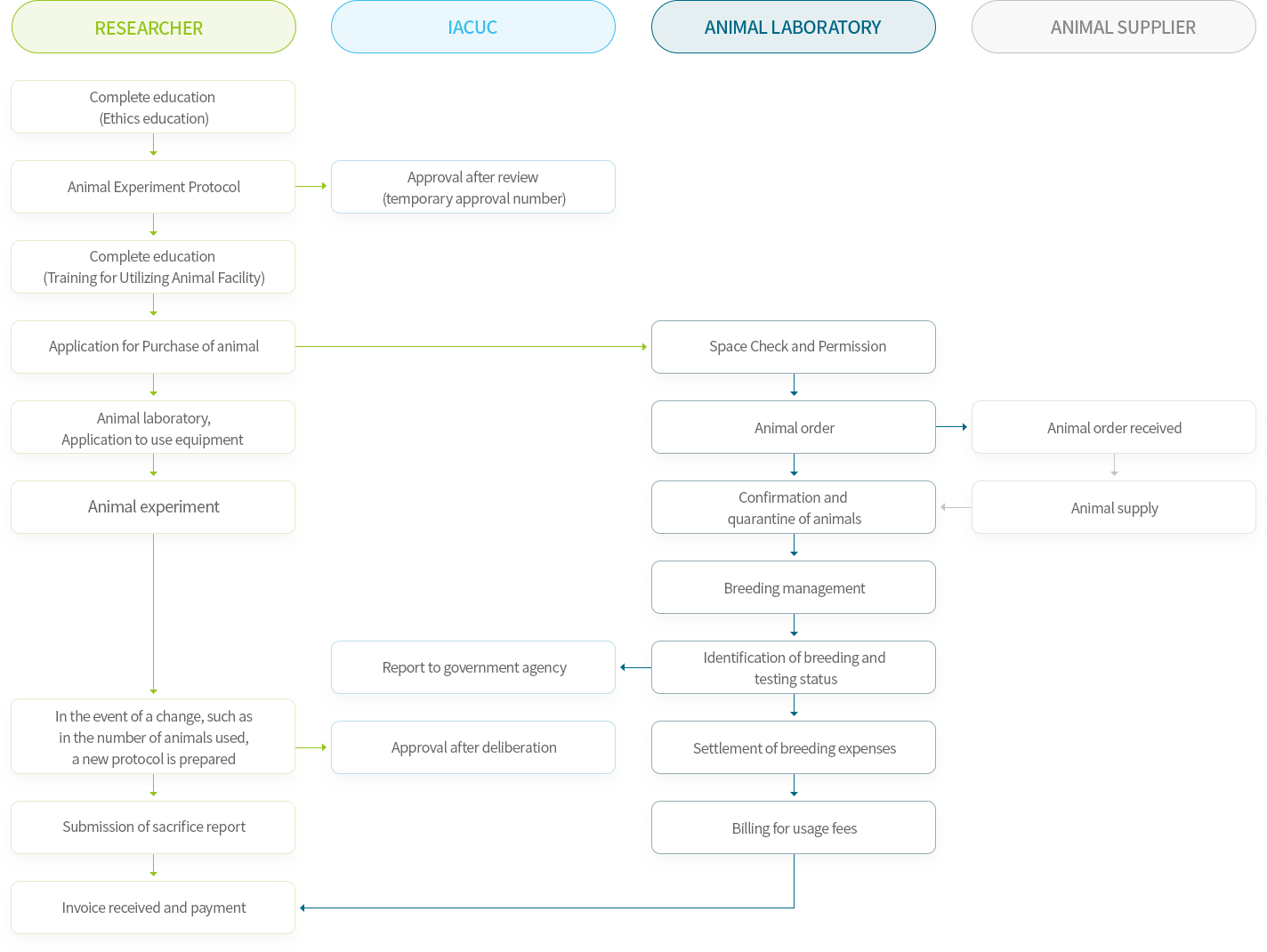Education

-
 STEP1
STEP1· Complete SCH IACUC Ethics education
· SIMS Training for utilizing Animal Facility (1time/month, Notice)
IACUC -
 STEP2
STEP2Education
1. Before writing an animal testing protocol, you should contact the chairman of the SIMS IACUC to obtain approval.
2. Animal application
3. Apply for animal purchase
4. Delivery date : Tuesday or Thursday
※The delivery date may change depending on holidays and company situations.5. Apply to carry in animals
1) Submit [Application for carrying in animals] and a monitoring report covering more than 1 year, documented by the breeding institution.
2) After being approved by the SIMS IACUC, bring animals into the quarantine room in the SIMS animal laboratory.
3) Laboratory animals which have been brought into the quarantine room are reared for 4 weeks, and the Korea Research Institute of Bioscience and Biotechnology is requested to perform microbial monitoring (31 items). The cost of the monitoring is paid for by the investigator.
-
 STEP3
STEP3Approval
-
 STEP4
STEP4Use
· User training based on the SIMS animal laboratory SOP must be observed.
-
 STEP5
STEP5Payment
· Usage fee is calculated on a daily basis for each cage, and monthly bills will be sent via e-mail at the beginning of each month.
- Usage fee
-
Item Area Soonchunhyang Others 1 cage/day SPF ₩ 900 ₩ 1,800 ※ If additional cage changes and drinking water changes beyond the normal management cycle are required due to the nature of the experiment, additional fees for replacing cages and drinking water will be charged.
※Management cycle
- Cage change: 1 time/week
- Water change: 2 times/week
- Items
-
Mouse Items (31 items) Sendai virus (HVJ) Mouse hepatitis virus (MHV) Hanta virus(Hemorrhagic fever with renal syndroma) Lymphocytic choriomeningitis(LCM)virus Mouse encephalomyelitis virus(GDVII) Pnemonia virus of mice(PVM) Ectromelia virus(agent causing mouse pox) K virus Lactic dehydrogenase elevating virus (LDEV) Mouse parvovirus(MPV) Mouse thymic virus(MTV) Polyoma virus Reovirus 3(REO 3) Rotavirus (Epizootic diarrhea of infant mice[EDIM]) Minute virus of mouse(MVM) Mouse adenovirus(MAV) Mouse Norovirus(MNV) Mycoplasma pulmonis Pasteurella pneumotropica Salmonella spp. Corynebacterium kutscheri Pseudomonas aeruginosa Clostridium piliforme (Tyzzer's disease) Cilia-associated respiratory(CAR) bacillus Intestinal protozoa Syphacia spp. Ectoparasite Helicobacter hepaticus H.bilis Streptococcus Staphylococcus aureus
- Routine Monitoring
-
Regular inspection for microbial contamination in breeding animals 4 times per year (quarterly)
- Special Monitoring
-
Quarantine Microbial testing for animals when they are carried in. In case of suspected disease outbreak Mass stranding Weaning rate for the living falls suddenly A large number of animals with a bent back appear Sudden decrease in feed intake Tremors and abnormal behavior are observed in animals A large number of animals avoid people (anxiety) etc.




